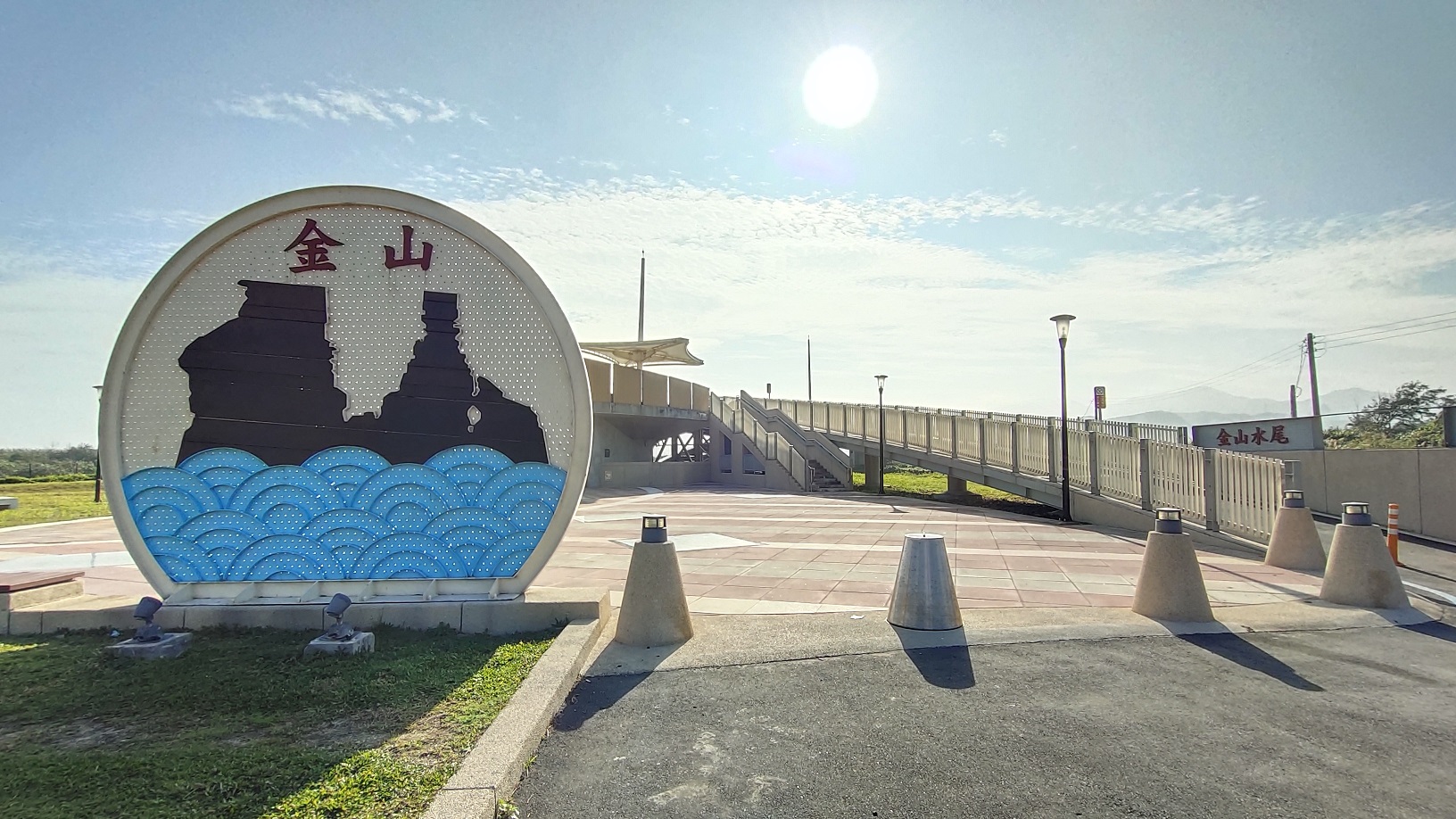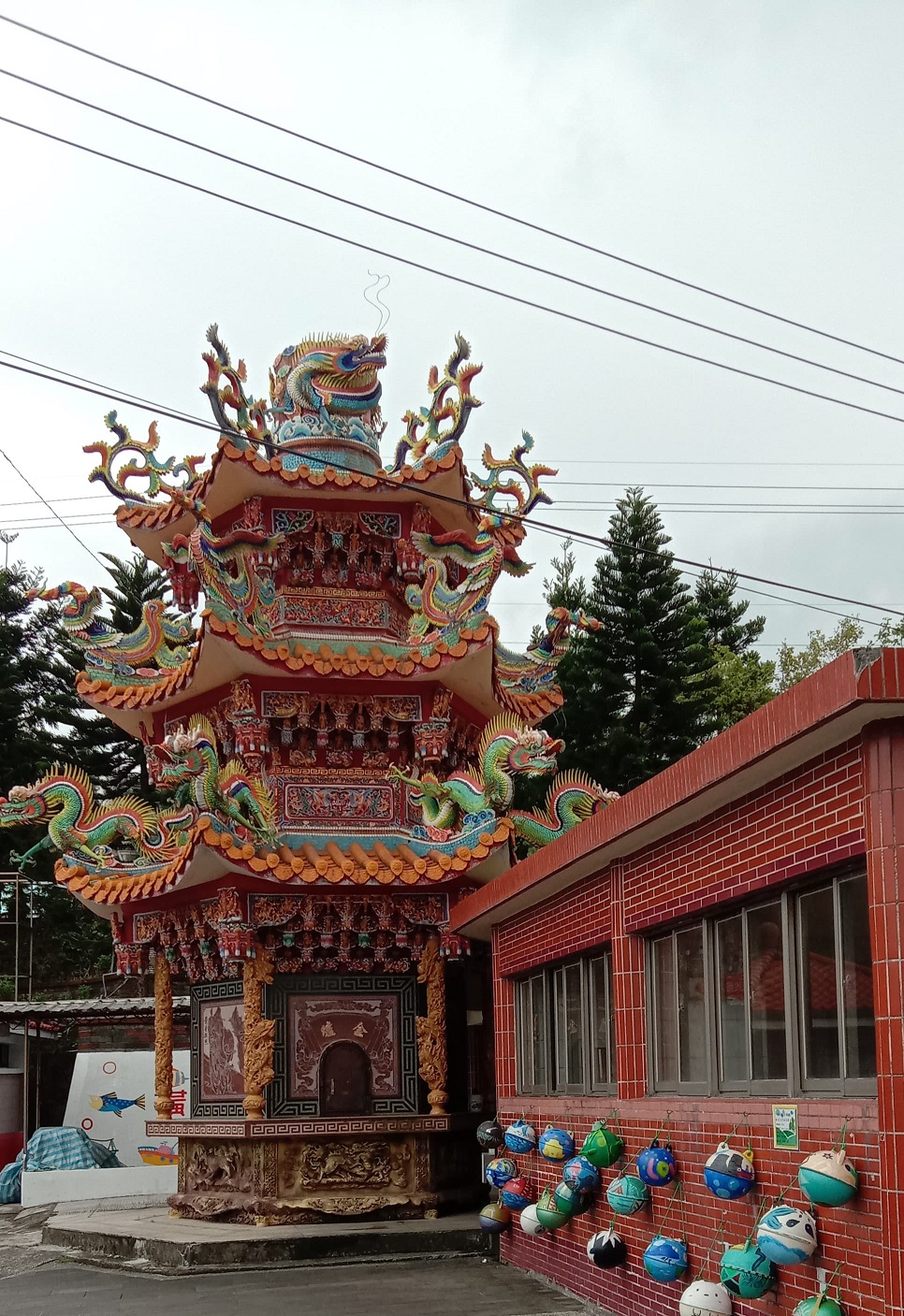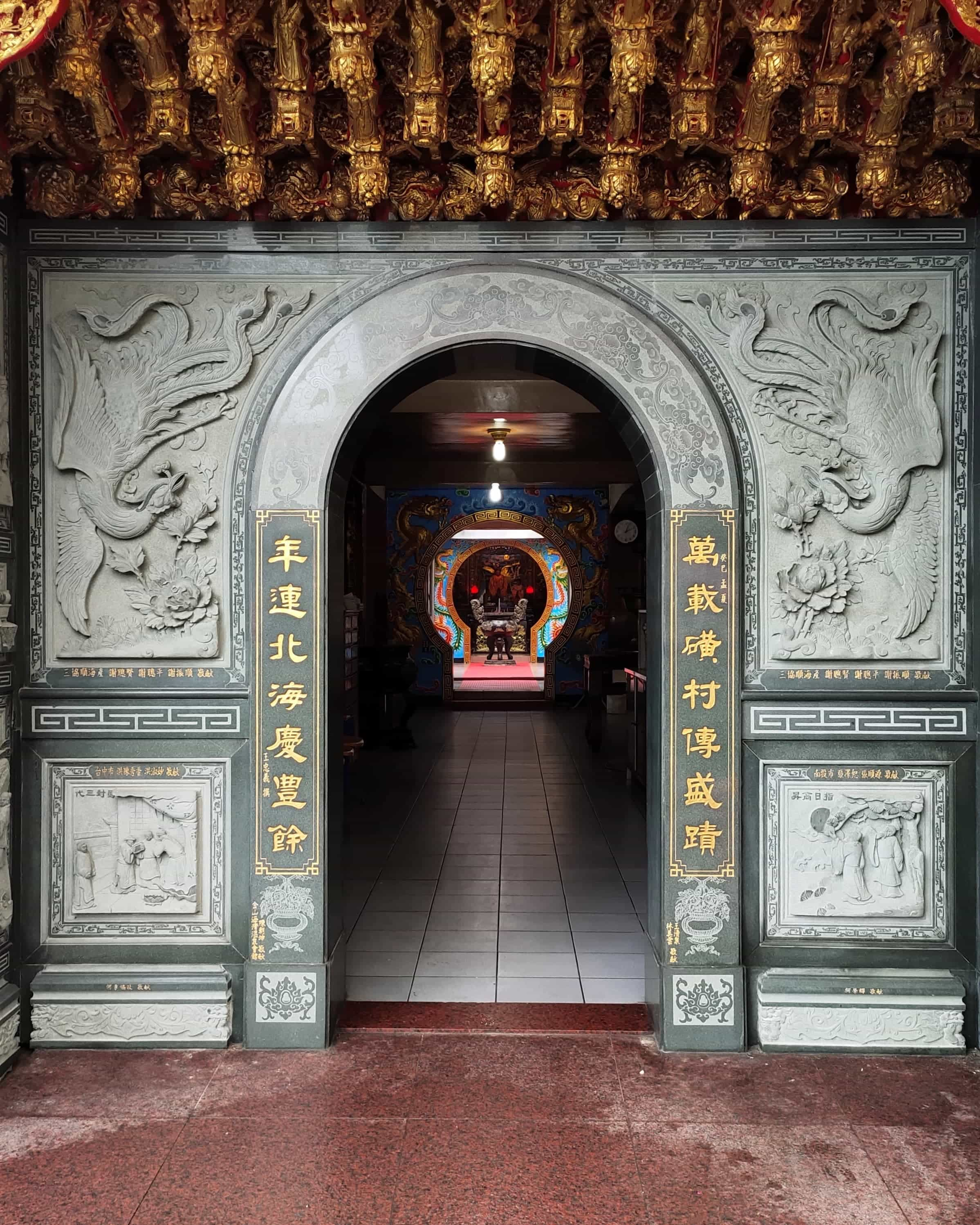Project Overview
I. The category we participate in : Historical Landmarks
II.Description of the place :
 Chengtian Temple is located in Huanggang community, Jinshan District, New Taipei City (in Northern Taiwan). On its back is Shitoushan, which was previously used as dugout shelters for air defense. There are still ruins from that time, but now it has become a popular tourist spot. Standing on Shitoushan, which is close to the Pacific Ocean, the tourists are attracted to the famous Twin Candlestick Islets. Standing on the courtyard of Chengtian Temple, tourists are fascinated by the expansive sea. The fishing port of Huanggang is in sight. In summer, there are tourists who come here to enjoy the seascape and play with water and some of them even fish. From time to time, you can see the sight of fishing boats going out to sea to fish. There are also hot spring clubs, youth activity centers, and community public hot spring pools in the vicinity. Chengtian Temple is located at the starting point of the ancient fish road, and tourists from downtown will see it right after they enter the community.
Chengtian Temple is located in Huanggang community, Jinshan District, New Taipei City (in Northern Taiwan). On its back is Shitoushan, which was previously used as dugout shelters for air defense. There are still ruins from that time, but now it has become a popular tourist spot. Standing on Shitoushan, which is close to the Pacific Ocean, the tourists are attracted to the famous Twin Candlestick Islets. Standing on the courtyard of Chengtian Temple, tourists are fascinated by the expansive sea. The fishing port of Huanggang is in sight. In summer, there are tourists who come here to enjoy the seascape and play with water and some of them even fish. From time to time, you can see the sight of fishing boats going out to sea to fish. There are also hot spring clubs, youth activity centers, and community public hot spring pools in the vicinity. Chengtian Temple is located at the starting point of the ancient fish road, and tourists from downtown will see it right after they enter the community.
Jinshan District, surrounded by seas and mountains, is located in Northern Taiwan. It is close to the Pacific Ocean and the Taiwan Strait. Jinshan was previously known as “Jinbaoli,” a transliteration from a village of the local plain indigenous tribe. It was originally cultivated by the plain indigenous tribe. In the late Qing Dynasty, immigrants from Changchow and Chuanchow, two different regions in Fujian Province in China came here to colonize. Later on, they settled down.
Today, Jinshan has highways extending in all directions, reaching Shimen and Danshui in the west, Wanli and Keelung in the east, and Yangmingshan National Park in the south. Thanks to its location in the center of the northern area, Jinshan has become a popular place for sightseeing and traveling. You can go hiking in the mountains and go swimming in the water.
III.Summary of the Project :
Chengtian Temple is the faith center of Huanggang Community. The main god is Zheng Chenggong, King of Yanping County (27 August 1624-23 June 1662), better known as Koxinga or Coxinga. Most of the residents of the older generation here live by fishing. It is a typical fishing village. Chengtian Temple protects the residents and blesses them with a good fish catch. The theme of this study focuses on a comprehensive research of the temple, including the origin of the temple, its history, its main miracles, the characteristics of its building and ritual activities, its surrounding environment, etc. The study is done through the interviews with local elders, the collection of historical data, its literature and field surveys. We try to sort out the history of Chengtian Temple and its connection with the community so that everyone can understand the impact and importance of Chengtian Temple on Huanggang community. Our team hopes that through this study, we can have a complete introduction to Chengtian Temple, and we can help Chengtian Temple collect complete materials so that generations can understand Chengtian Temple and achieve the purpose of passing on cultural heritage.
IV.Our Network Environment
We use computers in the library or computer classroom in our spare time to produce the research content of this project. After school, we often use computers and the Internet at home to discuss with the team members online. We collect and organize the collected data and photos and upload them to the school's FTP, most of which is done at home. We usually exchange information, messages or discussions through social media. We use the Chunghwa Telecom Optical Generation 100M / 40M at home to upload the relevant content of this project to the Taiwan academic network connected to the school. Besides, when we go out, we use our cell phones to record the discussion content and take photos. We then upload them to the cloud through the 4G network. In this way, we can use the computer at home to organize the data easily.
V. The problems we have encountered and overcome :
In this project, we encounter three main problems, which are solved through communication and discussion:
A. Time coordination: Each group member cannot meet and discuss frequently because we have extracurricular activities, but this issue has been adjusted through social media communication and discussion.
B. The problem of lack of data: The subject of this study is about historical monuments. It is difficult to obtain the data. We solve this problem by going on field surveys, referring to relevant literature, and interviewing local elders and cultural and historical workers.
C. Webpage production skills : In the beginning, we didn’t have any experience in producing the webpage, so we didn’t have any ideas about it. Luckily, teachers taught us and guided us to make the webpage. Their requirements for the quality of webpage pushed us to discuss and revise continuously. In the process, we turned to the Internet and books for help. After continuous efforts, we have finally completed the webpage we have worked hard for.
VI.Reflection
With the time passing, the temple has become a place for people to stop by and worship. They seem to do this because of a habit without knowing its reason and its roots. When we see this, we feel sorry. Therefore, we want to create a webpage about it to let people know more about its profound impact on culture and architecture. After continuous efforts, we finally completed the webpage. We realized that no pains, no gains. Efforts won’t necessarily lead to success. However, we definitely won’t succeed if we don’t put in time and effort.
/抱鼓石.jpg)


.jpg)
/雌獅.jpg)